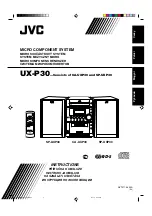
Roles and the Associations of Wireless Devices
Understanding Wireless Device Network Roles
6
Roles and the Associations of Wireless Devices
Workgroup Bridge Role
In workgroup bridge mode, the workgroup bridge associates to an access point, or bridge as a client and
provides a wireless network connection for up to eight Ethernet-enabled devices connected to its
Ethernet port. It informs the associated root device of the attached wired clients using IAPP messaging.
The workgroup bridge does not accept wireless client associations.
A workgroup bridge:
•
Associates to the following devices:
–
Root access points
–
Root devices
•
Accepts only wired clients.
•
Informs its root parent of all attached wired clients by using Inter-Access Point Protocol (IAPP)
messaging.
In addition, you can configure the wireless device to support the following workgroup bridge features:
•
Interoperability—The universal workgroup bridge can forward routing traffic using a non-cisco root
device as a universal client. The universal workgroup bridge appears as a normal wireless client to
the root device.
•
World Mode—In standard world mode configuration, the wireless device passively scans for world
mode only when the workgroup bridge boots up and performs a first scan. When the workgroup
bridge receives a response from the root device for its world mode scan, it updates its frequency list
and output power level according to the current country of operation. Thereafter, the workgroup
bridge always performs an active scan.
To support continued operation during inter-country travel (such as airplane travel from New York
to London), the workgroup bridge must perform a passive scan. In this configuration, the workgroup
bridge associates to the root device, and it obtains the country-specific list of frequency and output
power levels through passive scan.
To support this operational change, add the
roaming
keyword to the
world-mode
command. This
option instructs the workgroup bridge that it must always passively scanning.
The workgroup bridge uses the 802.11d option for world mode. The wireless device tries to receive
information about the country-specific list of frequency and output power levels through the 802.11d
Information Element.
Note
With roaming added to the
world-mode
command, roaming takes a longer time; therefore,
it is recommended only for situations in which it is required to assure continuous operation.
•
Multiple Client Profiles—The workgroup bridge can support multiple client profiles. A client device
with multiple configurable profiles can automatically select a client profile based on available
infrastructure and set of profiles. For more information, see
“Service Set Identifiers”
.
For example, to provide wireless connectivity for a group of network printers, connect the printers to a
hub or to a switch, connect the hub or switch to the Ethernet port of the workgroup bridge. The
workgroup bridge transfers data through its association with an access point or bridge on the network.
Figure 6
shows a typical scenario where the device functions as a workgroup bridge.
Содержание 3200 Series
Страница 14: ...xiv Cisco 3200 Series Wireless MIC Software Configuration Guide OL 6415 04 ...
Страница 120: ...Administering the WMIC Managing the System Time and Date 56 Cisco 3200 Series Wireless MIC Software Configuration Guide ...
Страница 136: ...Dynamic Frequency Selection Additional Information 6 Radio Channels and Transmit Frequencies OL 11491 03 ...
Страница 254: ...WIMIC Troubleshooting Error and Event Messages 12 Cisco 3200 Series Wireless MIC Software Configuration Guide ...
Страница 272: ...Supported MIBs Using FTP to Access the MIB Files 4 Cisco 3200 Series Wireless MIC Software Configuration Guide ...
Страница 314: ...Index IN 12 Cisco 3200 Series Wireless MIC Software Configuration Guide OL 6415 04 ...
















































